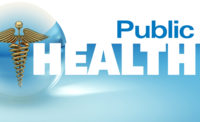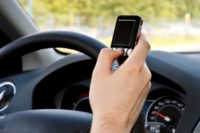On July 6, 2012 President Obama signed into law the Moving Ahead for Progress in the 21st Century Act (MAP-21), a $105 billion bill to fund federal surface transportation spending for two years.
Buried deep within the body of this legislation that addresses funding for over 30 different surface transportation programs managed by the federal government is the Agricultural Machinery Illumination Safety Act (AMISA).
With the signing into law of MAP-21, the roadway lighting and marking of agricultural machinery becomes, for the first time, the subject of U.S. National Highway Transportation Safety Administration (NHTSA) rulemaking and regulation. This article provides a brief overview of the Act and its impact on manufacturers of agricultural machinery.
AMISA – An Industry collaboration effort that became law
Prior to the passing of AMISA, the requirements for lighting and marking of agricultural machinery when operated on public roadways were left up to each state legislative body. While a small number of states had adopted the ASABE standard S279 – ‘Lighting and Marking of Agricultural Equipment on Highways’ as law within the state, most state statutes specified very minimal and outdated lighting and marking requirements for agricultural machinery, and in some cases specified requirements that conflicted with the well-established ASABE standard.
In 2009 public and legislative affairs staff from Deere & Company, CNH Industrial, 3M Company and AEM joined together to develop text and promote to Congress a bill that would establish the ASABE standard S279 as the minimum national requirement for lighting and marking of ag machinery when operated on public roadways in any of the fifty states. With the sponsorship of several farm state legislators in both the U.S. House and Senate, a proposed Act was developed and ultimately attached to a pending surface transportation funding bill. With passage of the funding bill (MAP-21) in 2012, the ASABE standard S279 became the law of the land.
What does AMISA require of equipment manufacturers?
In brief, the Act and its implementation rules require that agricultural equipment manufactured as new on or after June 22, 2017 be equipped with roadway lighting and marking in accordance with the ASABE standard S279.14 (July 2008) or any subsequent edition of the S279 standard.
How is agricultural machinery defined?
The machinery included within the scope of the Act includes agricultural tractors, self-propelled machines, implements and combinations thereof designed primarily for agricultural use as identified in the ASABE standard S390.4 – Definitions and Classifications of Agricultural Field Equipment.
Do the lighting and marking requirements of the regulation apply to used machinery?
No. The requirements apply only to agricultural machinery manufactured on or after June 22, 2017.
Does the regulation define how the manufacturing date is to be established?
No. When a piece of agricultural machinery is considered ‘manufactured’ is a determination made by the manufacturer.
Does the Act apply to new agricultural machinery that was manufactured before June 22, 2017, but that is sitting on a dealer’s lot as new equipment on or after June 22, 2017?
No.
The current ASABE lighting and marking standard is S279.17 (July 2013). Will the regulation be updated to reflect the newer edition of the standard?
NHSTA has determined that the provisions in the latest edition of the standard do not warrant an update to the regulation at this time.
Do I need to read and study the regulation in order to understand what the lighting and marking requirements are for new machinery?
No. The text of the regulation is very specific in that it makes repeated references to S279.14 or later editions of the standard. If a manufacturer meets or exceeds the technical provisions of S279.14, or any later editions of the standard, machinery will be in compliance with the regulation.
NOTE: The regulatory text includes a section that attempts to summarize the lighting and marking provisions of S279.14. However, the summary includes significant errors and omissions. Manufacturers are advised to always refer to the ASABE standard and not the text of the regulation when making a determination of what the lighting and marking requirements are for new machinery.
Where can I get a copy of either S279.14 or the latest edition of S279?
The latest edition of S279 is reasonably available for purchase through a number of publically available resources. A copy of the latest edition of the standard is available for purchase and download directly from ASABE at www.asabe.org. Archived copies of previous editions of the standard are also available for purchase from ASABE.
For more information, visit www.ProductSafetyHelp.com.
Source: www.aem.org





